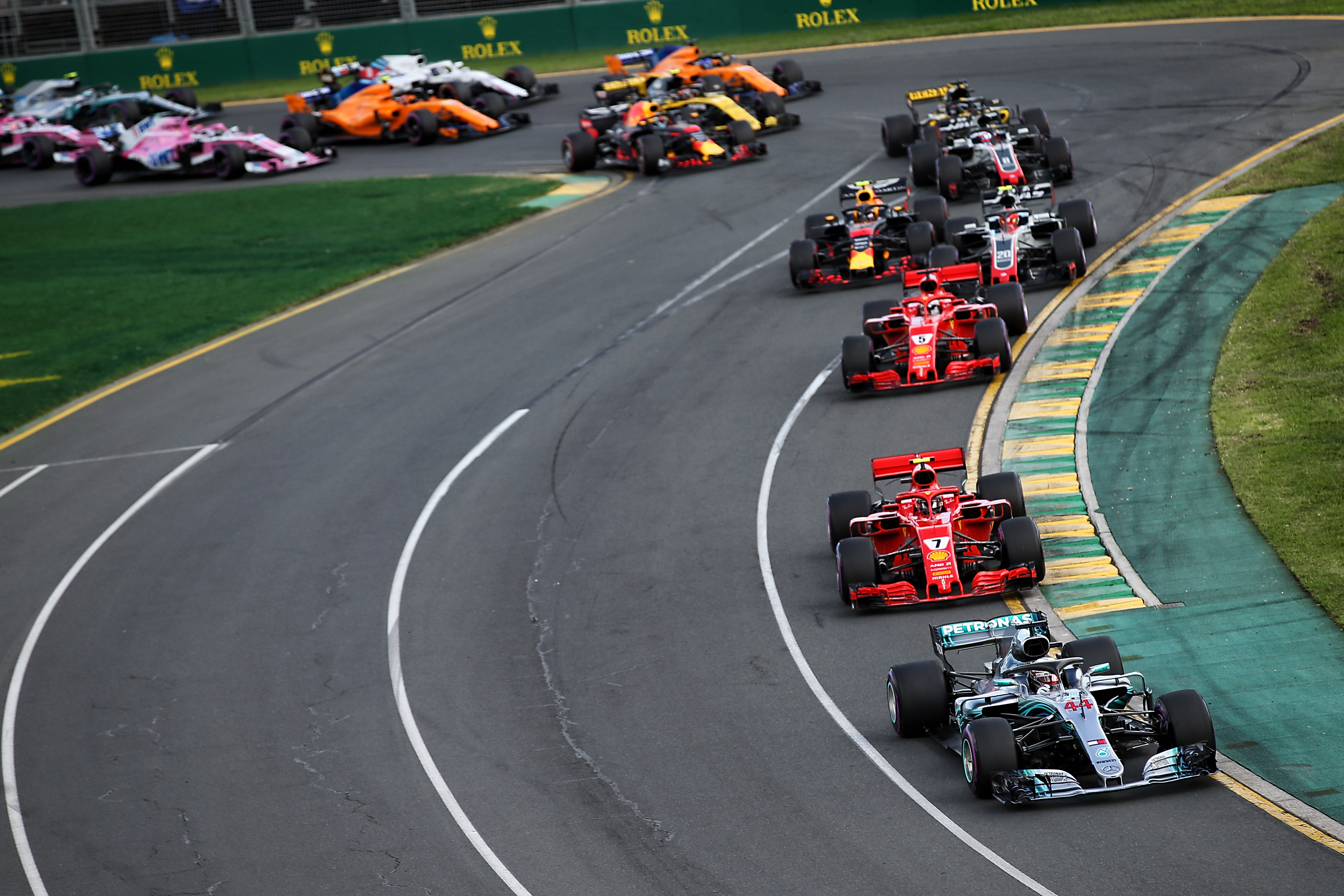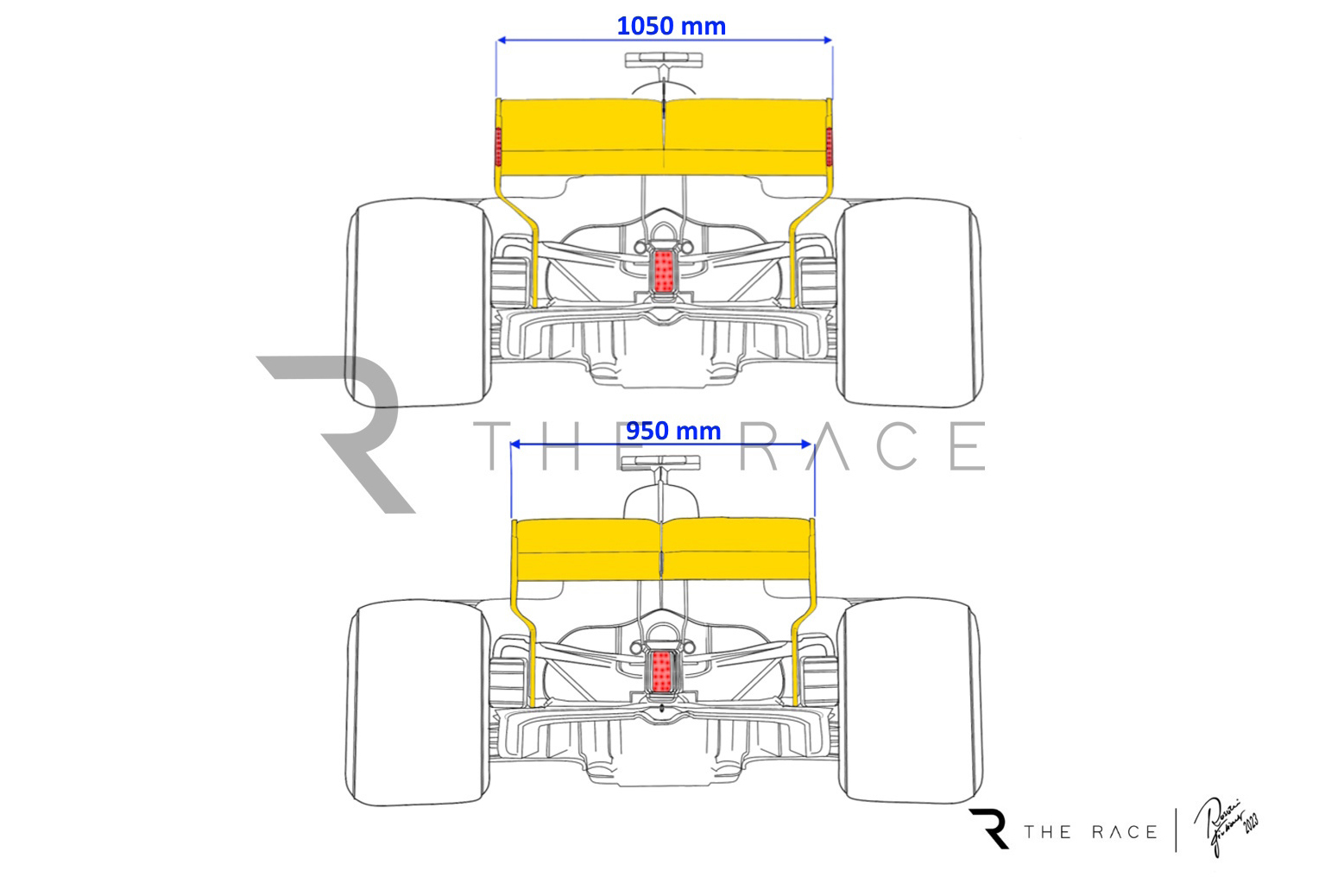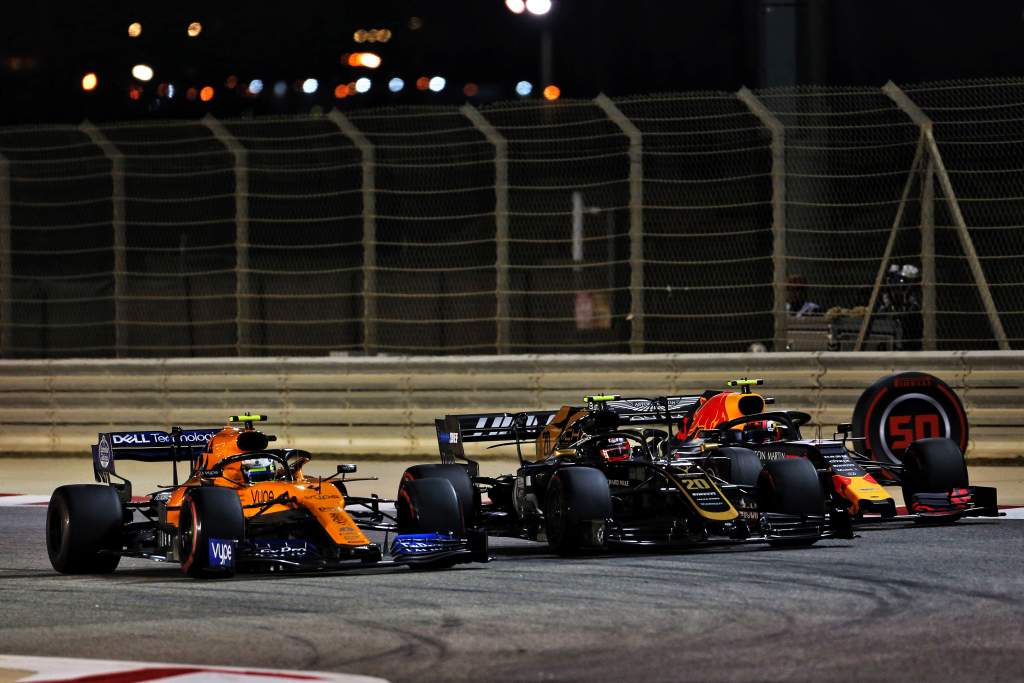Up Next

The FIA’s plan to tweak Formula 1’s technical regulations in 2025 prior to the major rules reset the following year to tackle the dirty air problem has echoes of a similar undertaking in 2019.
That those measures had primarily a containing effect on the performance loss while following another car, rather than significantly reducing the problem, illustrates how difficult it is to achieve such ends with modifications to existing rules.
The 2025 initiative is in response to the increasing loss of aerodynamic load while following another car. According to FIA single-seater director Nikolas Tombazis, this figure dropped from a loss of 50% when following two car lengths behind in 2021 to one of 20% at the start of this current regulations cycle last year. It has since risen to 35%, a number that will likely continue to edge upwards. This is a similar problem to what led to the 2019 changes.
Those were approved at the end of April 2018, created by the FIA’s technical department based on research conducted by F1’s in-house team headed by Pat Symonds to formulate what were originally planned as the 2021 regulations, but that were ultimately deferred until 2022 thanks to the COVID-19 pandemic.
The 2019 changes may have been founded on data gathered over a long period of time, but they were conceived quickly. The FIA suggested changes should be considered for the following year after a drab 2018 Australian Grand Prix, which gave limited time to create them given these could only be pushed through with majority agreement if done by the end of April. That meant the window to do so was around six weeks.

There was dissent among teams, with Red Bull the most vocal, but the changes were approved in time. Had this not happened, there was no chance of them getting pushed through – as from the start of May this would’ve required unanimous support.
The FIA studied F1’s research, in particular those highlighting key problems that had been identified as causing the turbulent air. That included outwash, which had become a key design objective of F1 cars since the 2009 ‘skinny aero’ overhaul. The following problem had progressively become worse since then, with a step in 2017 when the wider, higher-downforce cars were introduced.
“The major rule changes were aimed at facilitating closer racing,” said Tombazis in an interview with the FIA’s AUTO magazine back in 2019.
“The most important ones involved the front wing and the brake ducts. The changes around these aimed to reduce the ability of teams to control [air] wake from the front wheels, which was being pushed outboard of the car and creating a lot of turbulence behind it. That had a detrimental effect on the aerodynamic stability of a following car, making it very difficult for a rival to get close and make an overtaking move. The rules were designed to bring that outwash a little further in, making it easier for cars to race more closely.
“The goal of closer racing was also targeted through changes to the rear wing, which is wider and deeper. In many ways that was a safe bet, as we knew it would increase the effect of the drag reduction system [DRS] and therefore a car will be able to close on the one in front more easily.”
The changes were noticeable, even to the untrained eye. The front wing was increased from 1800mm to 2000mm in width, so to the full width of the car. The wings were made 20mm taller, with the depth increase by 25mm and the endplate rising by a similar height. Geometry restrictions were also adopted that prevented the endplate from aggressively turning the airflow outwards, while the number of strakes underneath the mainplane of the wing was limited to two on each side. The quantity of elements in the front wing was also cut to five on each side.

The width change might sound counter-intuitive given the objectives, but this was primarily driven by the fear that the other front-wing changes might mean insufficient front-end downforce could be generated to balance the car. There was also the hope that wider front wings meant designers would create less aggressive outwash, while the simplification would also mitigate the Y250 vortex – created 250mm either side of the centreline where the mandated central section of the mainplane transitions into the less regulated outboard part of the front wing – that was also used as part of the aerodynamic structures that created outwash.
The brake duct geometries permitted were also tightened up, with these elaborate structures long since known to be aerodynamic devices that happened to channel some cooling airflow. In harness with the front wing geometry, the brake ducts were considered a key tool in generating outwash.
There were also changes to the bargeboards, albeit primarily motivated by the desire to increase sponsor visibility. These were reduced in height by 150mm and moved forward 100mm.

Finally, the rear wing height was raised by 50mm, made 100mm higher and 20mm deeper.
That interaction of the front and rear wing was at the heart of the motivation for the changes. Reducing the outwash made it more likely that the airflow sent outboard would join up with the airflow being sent out of the back of the car. By keeping the wheel wake closer to the car, the hope was to make the “mushroom” airflow structure behind the car more powerful given this incorporated the majority of the dirty air and pushed it higher. Then, clean airflow would fill the gap lower down and meant the chasing car would hit less turbulence.
These changes were never expected to solve the problem, as realistically they represented some relatively simple measures picked from the far more dramatic concepts underpinning the ground-effect rules. Tombazis suggested ahead of the 2019 season that the changes would result in an overtaking increase that fluctuated from 10% to 50% depending on the track configuration.
That proved to be a little optimistic, with the results of the changes more in line with Symonds’s suggestion that “if we maintain the status quo and even slightly improve the wake characteristics, then we’ve done the right thing”. That was a reasonable expectation given the hasty gestation of these changes and their limited scope.
Inevitably, the lack of obvious impact drew criticism, but realistically it was never going to be a revolution. The consensus was that, as Symonds hoped, it contained the problem and stopped it becoming far worse. Drivers offered mixed conclusions, with some suggesting a noticeable improvement and others no change.
Given what was originally intended to be a two-year span for those rules was extended to three, that suggests these were useful and necessary changes that also acted as a helpful research tool to feed into what became the 2022 regulations that were constantly being refined during this period.
It’s likely similar conclusions will be drawn about F1’s 2025 plans. These have yet to be finalised and will be created in less of a rush than those implemented for 2019, which means they could potentially be a little more effective, but to make fundamental changes requires a wider rewriting of the rulebook. And that will follow in 2026.
However, that’s not to say the 2025 tweaks aren’t worth pursuing. It seems likely the 35% aero load loss while two car lengths behind that the FIA currently offers will gradually rise in the 17 months before the 2025 cars first run. If the changes contain that growth or even knock it back a little, that will be a positive intervention.
What can’t be expected is miracles. The combined resources of the 10 F1 teams mean the FIA, as the rulemaker, is comprehensively outgunned when it comes to finding potential workarounds. That’s just the nature of F1 and means that just as changes like this have happened before, they will likely happen again even after 2025.






